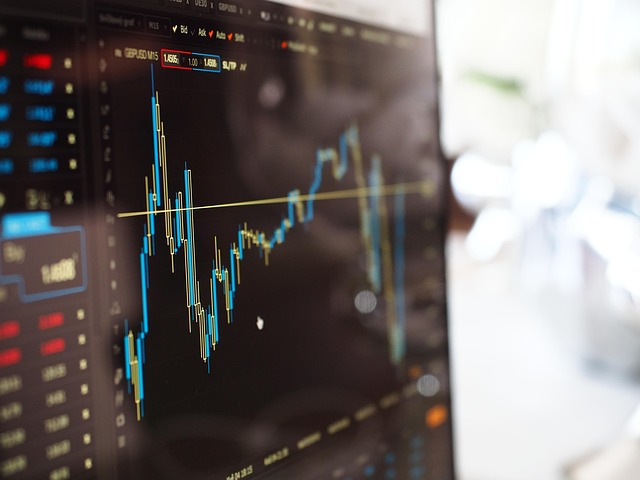Disadvantages of Commodity Trading in 2025
Author: Jameson Richman Expert
Published On: 2025-11-22
Prepared by Jameson Richman and our team of experts with over a decade of experience in cryptocurrency and digital asset analysis. Learn more about us.
Disadvantages of commodity trading are increasingly important to understand for anyone considering futures, options, or physical commodity markets in 2025. This article summarizes the primary risks, structural limitations, and practical drawbacks of commodity trading — from extreme price volatility and leverage hazards to storage costs and regulatory complexity — and offers actionable mitigation strategies, real-world examples, and reputable resources for deeper study.

Why understand the disadvantages of commodity trading?
Commodities remain a core asset class for producers, consumers, and speculators. However, unlike many financial instruments, commodities face unique physical, seasonal, and geopolitical pressures that can amplify downside risk. Whether you are a hedger protecting revenue or a speculator seeking returns, knowing the disadvantages of commodity trading helps you structure smarter positions, set realistic expectations, and deploy robust risk controls.
Quick overview: main disadvantages
- High price volatility and unpredictability
- Leverage and margin-call risk
- Physical delivery and storage complications
- Liquidity and market depth limitations
- Seasonality and basis risk
- Regulatory and counterparty risk
- Transaction costs and slippage
- Environmental and geopolitical exposure
1. High price volatility and unpredictability
Commodities often show much larger percentage swings than stocks or bonds. Price movements can be driven by weather, crop yields, natural disasters, OPEC decisions, supply chain disruptions, and macroeconomic shocks. For instance, crude oil can lose or gain double-digit percentages in a few sessions when geopolitical events disrupt supply or demand. Agricultural commodities like corn and soybeans are extremely sensitive to weather and crop-report surprises.
Example: In April 2020, WTI crude futures briefly went negative due to collapsed demand and storage shortages — a vivid demonstration of how quickly commodity prices can move under stress.
Why this matters: Volatility magnifies both gains and losses. Traders using leverage can be wiped out rapidly during sharp price moves.

2. Leverage and margin-call risk
Commodity trading commonly uses futures and margin accounts, providing significant leverage. While leverage can boost returns, it also increases the probability of margin calls and forced liquidations.
- Margin calls: Falling prices can require additional cash to meet maintenance margins. If you cannot meet a margin call, brokers may liquidate positions at poor prices.
- Concentration risk: Large positions in one contract or market magnify losses during adverse moves.
Actionable tip: Use position-sizing rules (e.g., risk no more than 1–2% of capital per trade) and maintain a cash buffer to meet unexpected margin calls.
3. Physical delivery, storage, and transportation complications
Some commodity contracts settle by physical delivery (oil barrels, bushels of wheat, metal ingots). Traders near contract expiry must manage logistics or roll positions ahead of delivery. Physical handling introduces additional costs and operational risks:
- Storage fees for warehoused commodities
- Transportation and shipping delays
- Quality and grade specifications affecting price
Example: A trader who inadvertently holds a physical-delivery contract into expiry might be obligated to take delivery at a location with limited storage, forcing a distressed sale.
Mitigation: Most speculators roll futures into later months before expiry. Hedgers should coordinate logistics and inspect storage arrangements in advance.
4. Liquidity and market depth limitations
Liquidity varies widely across commodity markets and contract months. While major contracts (WTI crude, Brent, gold) are generally liquid, many agricultural, soft, or minor metal contracts can have thin order books. Low liquidity means wider bid-ask spreads, higher slippage, and the potential for large price moves when sizeable orders hit the market.
Why this matters: Thin markets can make it difficult to enter or exit positions quickly at a fair price, increasing transaction costs and operational risk.
Actionable tip: Trade front-month contracts on major exchanges for better liquidity or use larger, liquid instruments to express a view (e.g., ETFs or futures on major benchmarks).

5. Seasonality, basis risk, and imperfect hedging
Basis risk is the difference between the spot price of a physical commodity and the futures price used to hedge. Basis can vary with location, quality, and time — especially in agricultural or energy markets with seasonal patterns.
- Seasonality: Planting, harvesting, and seasonal demand can cause recurring price patterns (e.g., natural gas demand increases in winter).
- Basis fluctuations: Local supply/demand imbalances create basis volatility that reduces hedging effectiveness.
Example: A Midwest grain farmer hedging corn prices using CME futures may still experience mismatches between futures prices and local cash prices due to regional basis moves.
6. Regulatory, reporting, and compliance complexity
Commodity markets are regulated by multiple agencies (for example, in the U.S. the Commodity Futures Trading Commission — CFTC — and National Futures Association). Rules on position limits, reporting, anti-manipulation, and cross-border trading can be complex and change over time. Institutional participants and retail traders alike must comply with evolving regulations.
Relevant resource: Read the CFTC’s overview for background on how U.S. commodity derivatives are regulated (CFTC official site).
Why this matters: Regulatory changes can alter market dynamics, limit strategies, or increase compliance costs. Cross-border traders must understand differing rules in each jurisdiction.
7. Counterparty and credit risk
Although exchange-cleared futures mitigate counterparty default risk via clearinghouses, over-the-counter (OTC) commodity contracts, swaps, and some non-standard instruments carry counterparty exposure. If a counterparty defaults, the aggrieved party may face recovery uncertainty and legal complexity.
Actionable tip: Use exchange-traded, centrally cleared instruments when possible to reduce bilateral counterparty exposure.

8. Transaction costs, fees, and slippage
Commodity trading can include brokerage commissions, exchange fees, clearing fees, roll costs when carrying positions forward, and the hidden cost of slippage in volatile or illiquid markets. These costs erode returns, especially for high-turnover strategies.
Tip: Compare commission and fee structures across brokers and trading venues. If you trade frequently, negotiate fee breaks or use low-cost platforms where appropriate.
9. Market manipulation and concentration risk
Some commodity markets have had instances of market manipulation or excessive concentration by large players which can distort prices. Smaller markets with fewer participants are particularly susceptible.
Example: Historical cases in energy and metals markets led to regulatory interventions and fines. Close monitoring and compliance help deter these behaviors, but the risk remains.
10. Environmental, social, and governance (ESG) and reputational risk
Commodities like coal, oil, and certain agricultural practices face increasing regulatory, social, and investor scrutiny over environmental and social harms. Firms exposed to these commodities may face higher costs, restricted market access, or reputational damage that influences commodity prices and long-term viability.
Actionable tip: Factor ESG exposures into long-term strategy and consider alternative commodities or hedging instruments that mitigate ESG risk.

11. Complexity of analysis and information asymmetry
Accurate commodity analysis requires understanding supply chains, weather models, inventory reports, macro policy, and technical market signals. Institutional players often have superior data, models, and information access — creating information asymmetry that disadvantages retail participants.
Resources to level up: Government inventory reports such as the U.S. Energy Information Administration (EIA) for oil and gas statistics, and the U.S. Department of Agriculture (USDA) crop reports for agriculture, provide authoritative public data.
Practical examples illustrating disadvantages
- Storage shock: The 2020 WTI negative price event occurred when storage capacities approached limits, forcing sellers to pay buyers to take oil off their hands.
- Seasonal basis spike: A local grain elevator might pay less than futures due to transport bottlenecks during harvest, leaving hedgers with unexpected losses despite correct directional bets.
- Leverage wipeout: A speculator using high leverage on a volatile heating oil contract may face rapid margin calls during a weather-driven price swing.
How retail traders can reduce the disadvantages of commodity trading
- Educate before trading: Understand contract specifications, tick sizes, expiry rules, and delivery terms. Educational resources such as Investopedia’s commodity trading guides can help.
- Use disciplined risk management: Implement stop-losses, position-size limits, and maintain a margin buffer to reduce forced liquidations.
- Diversify: Avoid concentration in one commodity or contract month; diversify across asset classes if appropriate.
- Prefer exchange-cleared instruments: Reduce counterparty risk by trading futures on regulated exchanges.
- Consider ETFs and ETNs: For simpler exposure, commodity ETFs can provide diversified exposure without dealing with physical delivery or rolling futures yourself.
- Stay informed with authoritative data: Follow inventory and production reports from official agencies like the EIA and USDA.

When commodities still make sense despite disadvantages
Commodities can provide portfolio diversification, inflation hedging, and trading opportunities. Producers and consumers often need to hedge price risk to stabilize revenues/costs. For investors, exposure to commodities can reduce correlation with equities during inflationary periods.
Use cases:
- Producers hedging forward sales (e.g., farmers locking in crop prices)
- Energy firms hedging fuel and input costs
- Investors using commodities to hedge inflation or diversify portfolios
Tools and platforms (links and resources)
If you decide to trade commodities, choose a reputable, regulated platform and learn to use risk controls. For futures and commodity derivatives, major platforms and brokers provide access to global markets. Explore platform guides and educational courses before trading.
Resources and guides:
- Commodity market — Wikipedia (overview and history)
- U.S. Commodity Futures Trading Commission (CFTC) (regulation and rules)
- U.S. Energy Information Administration (EIA) (energy data)
- U.S. Department of Agriculture (USDA) (agricultural reports)
- Investopedia — What is a Commodity? (educational primer)
Advanced tactics to mitigate commodity trading disadvantages
For professionals and sophisticated retail traders, several strategies can reduce downside exposure:
- Spread strategies: Calendar spreads (long one month, short another) reduce exposure to directional price swings and exploit roll-yield opportunities.
- Options for defined risk: Using options instead of futures can cap downside risk at the premium cost while maintaining upside potential.
- Cross-hedging: Hedging using correlated but more liquid contracts when local contracts lack liquidity.
- Use of swaps and OTC carefully: For customized exposures, OTC swaps can be helpful but require careful counterparty due diligence.
- Inventory management: Producers can optimize storage and stagger sales to smooth revenue across price cycles.

Case study: Hedger vs. speculator
Hedger scenario: A commercial grain elevator sells futures to lock in revenue for its upcoming soybean inventory. Their priority is price certainty, so they accept the opportunity cost of trading in exchange for predictable cash flows. However, basis risk and local transport costs can still undermine the hedge.
Speculator scenario: A day trader takes a leveraged position in crude oil futures anticipating a geopolitical shock. If the news goes the wrong way or the shock reverses quickly, margin calls and rapid losses can occur. The speculator faces higher tail risk compared with the hedger.
Where to learn more and helpful tools (including trading aids)
High-quality courses and tools can accelerate learning. For example, educational guides and trading courses can teach contract mechanics and risk management. If you are exploring crypto-adjacent trading or cross-platform strategies, there are reviews and guides on AI trading bots and exchange apps that may be useful (ensure independent verification before using automated systems).
Suggested further reading and tools:
- Binance trading course and guide — a resource for understanding exchange mechanics and trading basics.
- Bybit AI trading bot review 2025 — review of automated trading tools you may encounter.
- Mobile app guide for trading platforms — mobile access introduces speed but also execution and security considerations.
Note: Automated systems and bots can magnify risks if not configured properly. Always test in simulated environments before deploying real capital.
Practical checklist before you trade commodities
- Understand contract specs: tick size, contract size, margin requirements, delivery terms.
- Verify liquidity: check average daily volume and bid-ask spreads for the contract and month.
- Review regulatory obligations and tax implications in your jurisdiction.
- Set risk parameters: max drawdown, stop-loss, margin buffer, position-sizing rules.
- Plan for worst-case scenarios (storage limits, forced delivery, regulatory changes).
- Use reputable exchanges or brokers that offer clearing and custody protections.

Where to open accounts and access markets
If, after studying the disadvantages, you still want to participate in commodity or derivatives markets, choose regulated and well-known platforms. Below are example platforms and referral links that can help you set up accounts on major exchanges or derivatives providers — ensure you review fee structures, regulatory status, and educational resources before depositing funds:
- Binance (spot and derivatives): Open a Binance account
- MEXC: Register on MEXC
- Bitget: Sign up on Bitget
- Bybit: Create a Bybit account
Always verify platform regulatory coverage in your region and favor exchanges that provide strong custody controls and transparent margining.
Final thoughts: Are the disadvantages insurmountable?
The disadvantages of commodity trading are real and in some cases severe. Yet many market participants — from producers hedging crops to investors seeking diversification — find appropriate and structured ways to participate while managing risks. The keys are education, disciplined risk management, using exchange-cleared instruments where possible, and continuously monitoring fundamental supply-demand drivers and regulatory developments.
If you are new to commodities, start small, use simulated trading to learn contract mechanics, and rely on authoritative sources like the CFTC, EIA, and USDA for data. For platform tutorials and advanced tools, consider reputable trading guides and course material, and carefully vet automated systems or bots before using them in live markets.
Further reading and important links
- Commodity market — Wikipedia
- CFTC — regulation and consumer resources
- EIA — energy statistics and analyses
- Bybit AI trading bot review (2025)
- Binance trading course and PDF guide
- Secure mobile app guide for trading
Understanding the disadvantages of commodity trading lets you frame realistic objectives and limits. With thoughtful preparation, many of the risks can be managed — but they should never be underestimated.